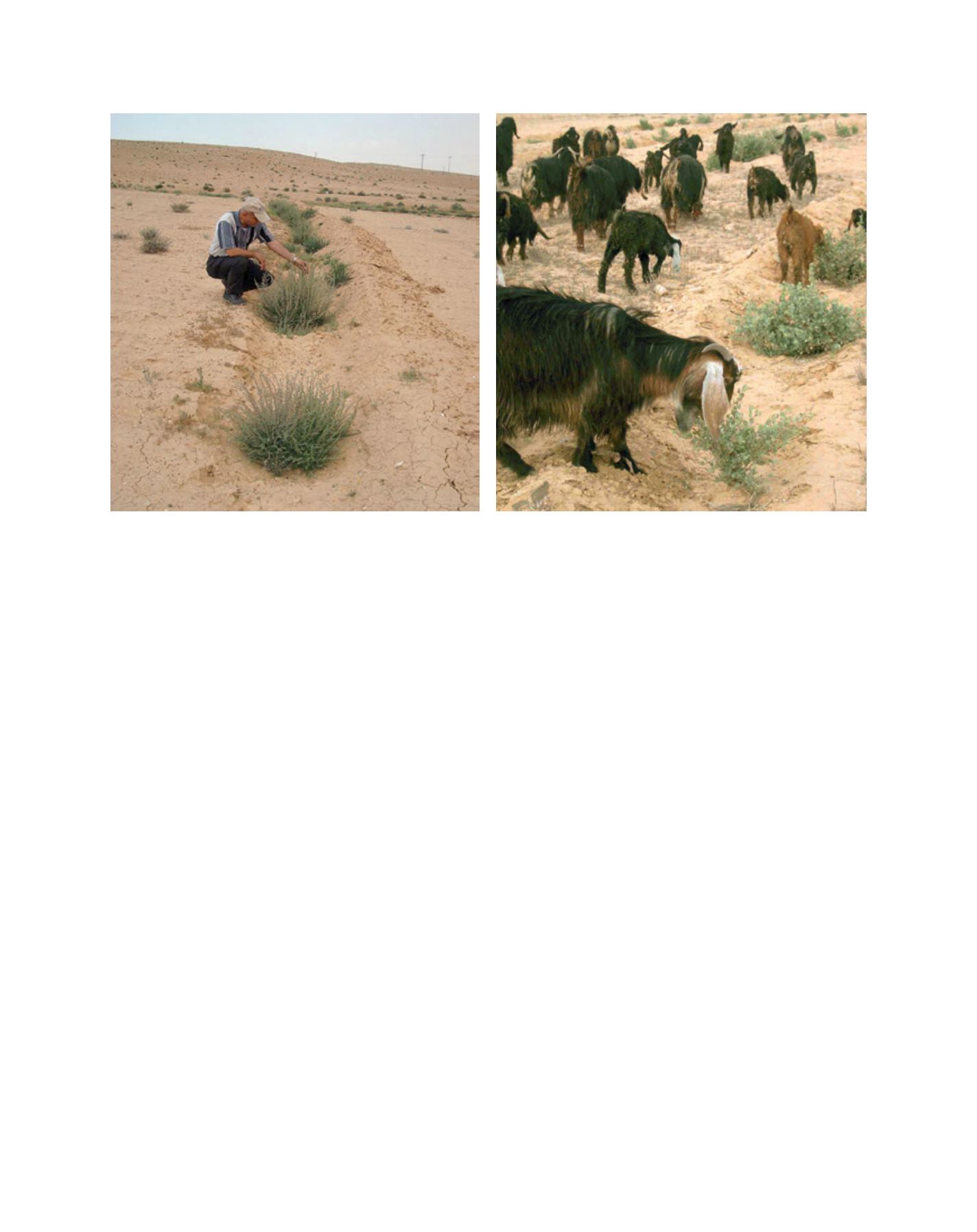

[
] 141
rate is quickly rising. The Jordanian Government has decided
to adopt the water harvesting technique to enabling large-scale
planting throughout the Badia, which is substantially improv-
ing fodder and forage productivity, crop yields and incomes for
pastoralists and farmers. Planting the fodder shrubs in widely
spaced roads has reduced the pressure on rangelands which
have now recovered with much more vegetative growth/cover.
This has initiated the recovery process of lands degraded due
to overgrazing and desertification. Benefiting pastoralists and
farmers are enjoying more than 1.6 times their previous forage
shrub production and significantly higher rangeland productiv-
ity. Their yield for barley has more than doubled as compared
to that grown without water harvesting and water application.
This intervention was coupled with research to promote
drought-tolerant shrub species as a crucial means of assist-
ing rangeland rehabilitation efforts, helping to conserve
rapidly-depleting water resources and maintaining grazing
at sustainable levels. One of the most commonly planted
shrubs in the Mediterranean,
Atriplex halimus
, is known
for its remediation of degraded rangelands and salt-affected
areas. It is commonly used as a forage plant for sheep
and goats and contributes significantly to the feed calen-
dar when herbage availability is low. It is the only green,
protein-rich forage available during late summer and early
fall when it is needed for the nourishment of pregnant and
early-lactating ewes. Disseminated as part of a participa-
tory sustainable grazing strategy, which was developed
in cooperation with landowners, pastoralists and other
community members, the promotion of native perennial
shrubs has been a successful response to continuous land
degradation. Recent successes include a significant increase
in barley production, up from 50 tons per hectare to 200
tons per hectare in one rural community, and a near total
halt of sediment loss due to the construction of micro water
harvesting structures.
These technologies implemented in Jordan’s rain-fed
Badia for improved water and land management have
successfully increased the vegetative plant cover and
improved soil productivity, leading the way for expansion
and scale-up in similar agroecosystems.
These examples from Iraq and Jordan demonstate the power
of the integrated agrosystems approach which has been the
cornerstone of ICARDA’s research philosophy to address the
challenges facing dry areas including the serious effects of
climate change. We earnestly believe that this approach holds
the key to bringing out the underutilized potential of the
drylands. But science and technology alone cannot succeed
without continuous investments in agricultural research and
development and the support of an enabling policy environ-
ment. New and strong partnerships also assist in combating
desertification since it is obviously beyond the scope and
capacity of any one institution or country to cope with this.
Therefore, in the cases mentioned above, both the Jordanian
and Iraqi governments were involved as full partners from
the beginning of the research process where both the coun-
tries adopted the technologies to launch large development
interventions to combat land degradation and desertifica-
tion. It is through partnerships, alliances and collaborative
efforts such as the United Nations Convention to Combat
Desertification, the Consultative Group for International
Agricultural Research, the Global Dry Land Alliance and
others that governments in dry areas are supported in plan-
ning for and envisioning prosperous dryland communities
with higher incomes, better access to food, improved nutrition
and health and increased capacity to manage natural resources
in equitable, sustainable and innovative ways.
Water harvesting technology in the Jordanian Badia has reduced soil erosion, enhanced the collection of water and boosted vegetative cover
Images: ICARDA
L
iving
L
and
















